Introduction
Are you curious about the differences between deck shoes and boat shoes? You might have heard about these shoes if you’re a sailor, fisherman, or simply enjoy maritime activities.
You have come to the right place if you need to know what shoe to choose from Deck Shoes vs Boat Shoes.
I have covered the key differences between these two shoes, like their material, comfort, and water resistance.
By considering these factors and personal preferences, you can make an ideal decision and select the right shoe for your needs.
Table of Contents
- Introduction
- History Of Deck And Boat Shoes
- Are Deck Shoes and Boat Shoes the Same?
- Difference Between Deck Shoes vs Boat Shoes
- Deck Shoes and Boat Shoes Design
- Durability
- Traction: Which Shoe Has Better Grip – Deck Shoes or Boat Shoes
- Intended Use: What Activities Are Each Type Of Shoe Best Suited For
- Similarities Between Deck Shoes and Boat Shoes
- How To Choose Between Deck Shoes And Boat Shoes
- Which Shoes To Choose For Sailing?
- Deck Shoes vs Boat Shoes Pricing
- Final Verdict
- FAQ
History Of Deck And Boat Shoes
In 1935, Sperry introduced deck shoes, also referred to as topsiders.
The primary focus of this design was to offer better grip on wet surfaces, and it featured a leather upper and rubber sole equipped with siping for traction.
Sebago is credited with creating boat shoes in 1946, which boast a moccasin-style construction with a molded rubber sole.
Although both shoes were initially intended for sailors, their popularity surpassed the boating community, and they soon became iconic in casual footwear.
Today, they continue to be adored for their classic style and practical features, making them an ideal choice for anyone seeking nautical-inspired footwear.
Are Deck Shoes and Boat Shoes the Same?
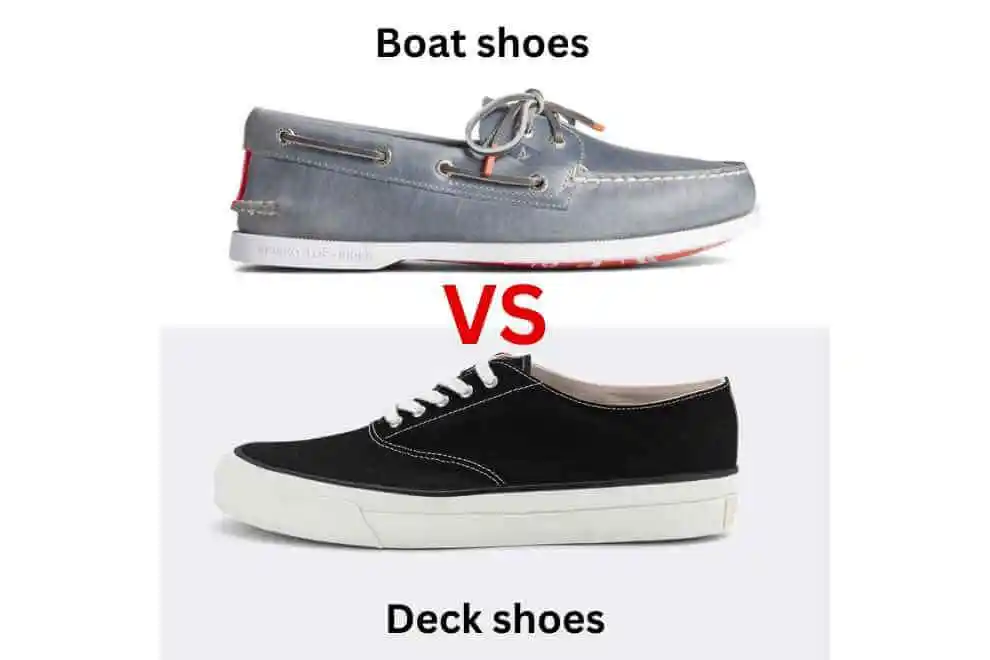
I can assure you that these two shoes share some similarities, but they are not the same.
Boat shoes normally have leather or fabric uppers with a non-marking rubber sole for extra wet-weather traction.
They also often feature rust-proof eyelets, rawhide laces that won’t fray or break, handsewn moccasin construction, and cushioning midsoles coated with air-mesh drains.
Deck shoes are made of leather or synthetic fabrics and have a more flexible sole.
They are designed to be slip-resistant and provide comfortable support during long periods of wear.
Difference Between Deck Shoes vs Boat Shoes
Now that you know boat and deck shoes are not the same, it’s time to know their key differences in detail.
These two shoes differ on various factors, such as design variations, sole construction, and style.
I’ve described each difference carefully below.
Deck Shoes
- Canvas: It has durable and lightweight fabric that is commonly used for the upper part of deck shoes
- Leather: Deck shoes often feature leather laces, linings, and accents for a classic and stylish look.
- Rubber: A common choice for deck shoes due to its slip-resistant and waterproof properties.
Boat Shoes
- Leather: The upper part of boat shoes is typically made of leather, which is durable and water-resistant
- Suede: Sometimes used for the upper of boat shoes, suede gives the shoes a soft texture and a stylish look
- Rubber: Boat shoes often feature a rubber sole that is slip-resistant and provides good traction on wet surfaces
While both types of shoes may use similar materials, such as leather and rubber, each shoe’s specific type of leather and rubber can differ slightly based on their intended use and design.
Deck Shoes and Boat Shoes Design
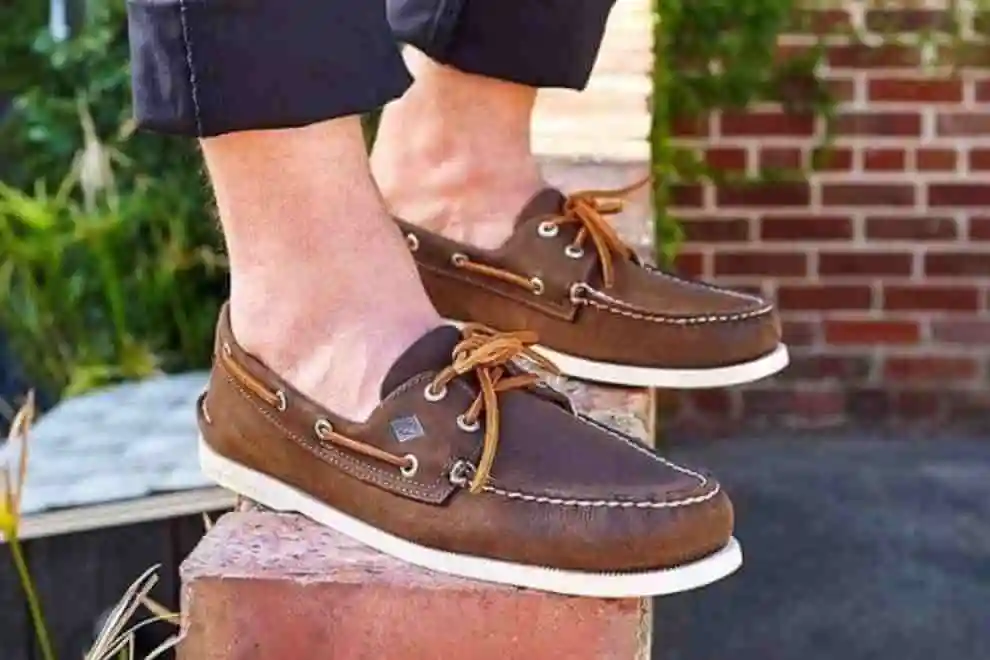
Deck and boat shoes are both low-cut shoes designed for practicality and style.
Deck shoes have a wider toe, a rubber sole with a siping pattern for wet surfaces, and two-eyelet lacing.
Boat shoes have a raised heel, a more oval-shaped toe, a rubber sole optimized for dry surfaces, and leather laces passing through multiple eyelets.
Deck Shoes
- Shape: Deck shoes are typically low-cut, with a moccasin-like shape that is wider in the toe area and narrower in the heel. They do not have a defined heel and usually have a rounded toe.
- Sole: The soles on deck shoes are usually rubber and have a siping pattern, which helps to provide good traction on wet surfaces.
- Lacing: Deck shoes are often designed with two-eyelet lacing, which means they have two pairs of eyelets for the laces to pass through.
Boat Shoes
- Shape: Boat shoes are also low-cut, but they have a distinct shape that features a raised heel and a front that is narrower than the heel. The toe is generally more oval-shaped than round.
- Sole: The sole on boat shoes is made of rubber and typically does not have to sipe but rather has a pattern optimized for dry surfaces.
- Lacing: Boat shoes come with leather laces that pass through at least two pairs of eyelets, often including a pair of metal eyelets at the top to keep the shoe tight.
Durability
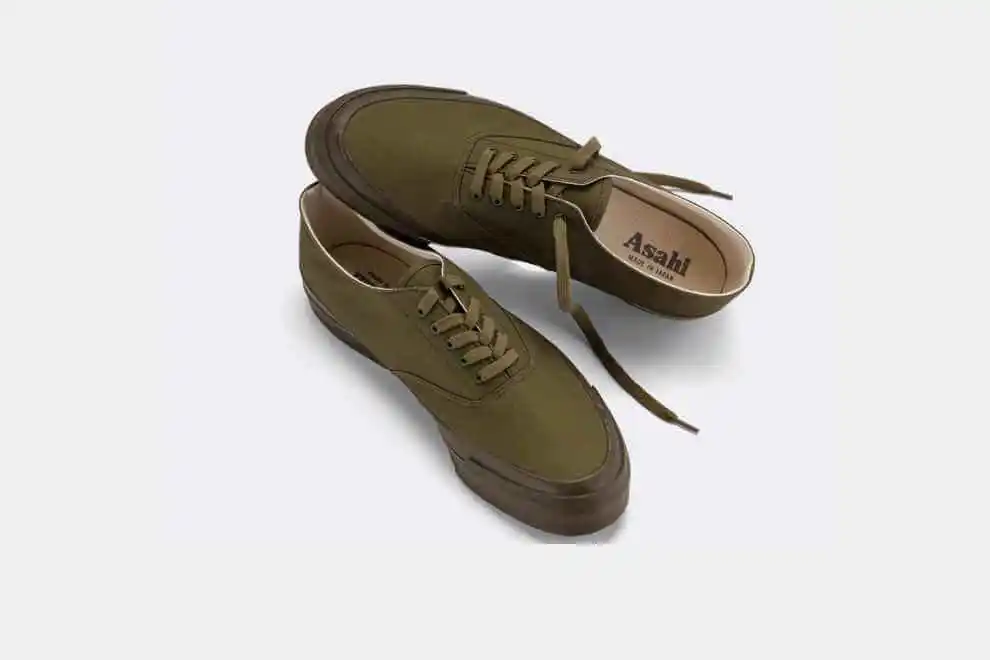
Deck and boat shoes are built to endure tough weather conditions and wet environments.
These shoes are pretty durable. Let’s look at their durability and how they’re designed to withstand the elements.
Deck Shoes:
Deck shoes are generally made of leather and durable materials such as canvas and rubber. Leather upper provides durability and is water-resistant.
While testing these shoes, I discovered that their rubber soles offer good traction, making them perfect for wet conditions.
Most deck shoes come with a handsewn moccasin construction, making them sturdy and long-lasting.
Also, deck shoes are easy to maintain and often need minimal upkeep.
The leather upper can be cleaned with a damp cloth, and the rubber soles can be easily washed.
Boat Shoes:
Boat shoes are also made with durable leather, canvas, and rubber.
The leather construction is essential for water resistance, and the rubber soles provide good traction.
However, a significant part of their durability is attributed to their unique stitching.
What impressed me is that Boat shoes feature handsewn construction that increases the shoe’s strength and durability.
The stitching on boat shoes guarantees their durability and helps maintain their form.
Also, they require little care to keep them appearing brand-new.
They may last a very long period with proper maintenance, including cleaning salt and filth after using them.
Traction: Which Shoe Has Better Grip – Deck Shoes or Boat Shoes
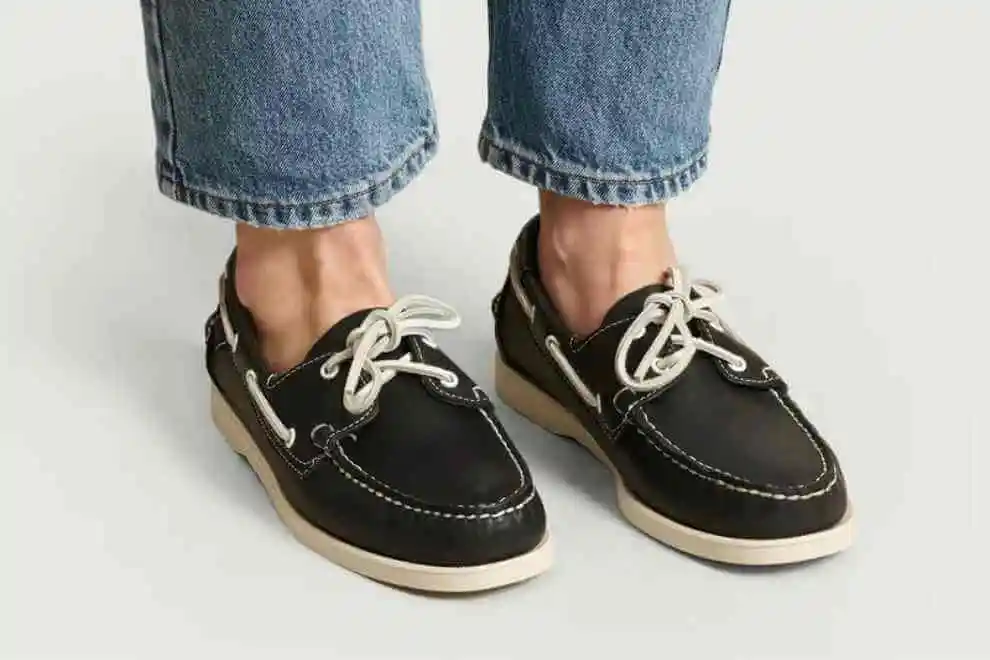
Traction is an essential feature of Deck and boat shoes, particularly for boating enthusiasts who require a reliable grip on wet and slippery surfaces.
Deck Shoes:
Deck shoes are designed to provide excellent traction on wet surfaces.
The shoes typically have a rubber sole that features siping, which are thin cuts that provide a better grip on wet surfaces.
Furthermore, I noticed that its sole pattern features many geometric markings to prevent slippage while walking on wet surfaces.
Most deck shoes also have a lacing system that secures them to the wearer’s feet, preventing them from slipping and sliding inside the shoe.
Deck shoes are particularly well-suited for sailing and fishing, where traction on slippery surfaces is crucial.
Boat Shoes:
Boat shoes are also designed to provide excellent traction on wet surfaces.
Like deck shoes, they generally feature a rubber outsole with siping to increase grip on wet surfaces.
Some boat shoes come with a razor-cut sole pattern that enhances the shoe’s grip on wet surfaces, such as a wet deck.
One unique aspect of boat shoes is the design of the sole.
They frequently feature multiple offset channels on the sole rather than serial tracks that run the full length of the sole.
This design is intended to disperse water away from the shoe quickly and minimize the risk of slipping.
Intended Use: What Activities Are Each Type Of Shoe Best Suited For
Despite their differences in design and functionality, deck shoes and boat shoes are often used interchangeably.
Although they are similar, they have subtle differences and are intended for different purposes. The following are the best activities for each type of shoe:
Deck Shoes
Deck shoes were originally designed for sailors to help prevent slips and fall on wet, slippery surfaces.
Over time, they have become popular for anyone in or around water. You can use deck shoes for:
- Boating: Deck shoes’ slip-resistant soles make them ideal for use on a wet and unstable surface. It also provides good traction on that surface.
- Casual wear: The design of deck shoes is casual and stylish. They can be a great addition to any casual outfit or summer wardrobe.
- Walking and Lounging: Deck shoes make a comfortable and convenient walking shoe ideal for lounging.
Boat Shoes
Boat shoes were originally designed for, you guessed it, boat use. They were created to provide a non-slip sole and suitable grip on the boats.
Boat shoes have since picked up a unique style and fashion, suitable for many situations. They can be worn for:
- Boating: Like deck shoes, boat shoes grip wet surfaces well, but more importantly, they were designed for use on boats specifically. Their non-marking outsole protects the Deck from scuff marks.
- Dressy Casual wear: Boat shoes can be easily dressed up or down, making them versatile in any social setting. They pair well with various looks, including shorts, jeans, and khakis.
- Business Casual: When paired with tailored pants, you can wear a nice pair of boat shoes in business casual settings.
Overall, deck and boat shoes can be great for warm-weather outdoor activities. It’s up to the individual to decide which shoe type best suits their specific needs.
Similarities Between Deck Shoes and Boat Shoes
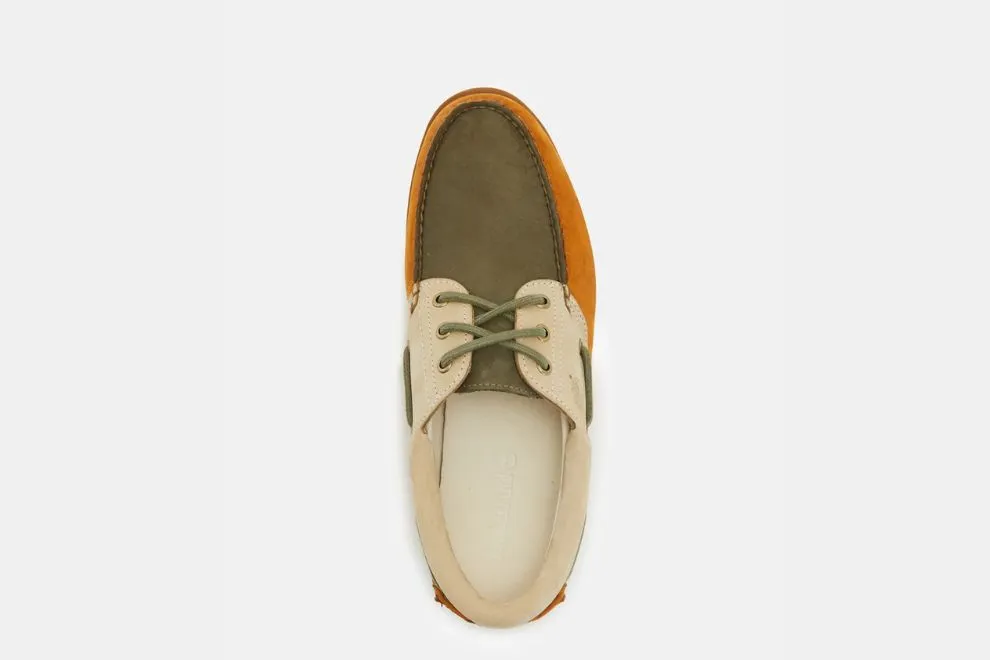
Though deck shoes and boat shoes are different, these shoes have some common features. I’ve put together some of these features for you.
Here’s a breakdown of some common features shared by deck shoes and boat shoes:
Comfort:
Both deck shoes and boat shoes are designed to be comfortable.
- Materials: Both types of shoes use soft and durable materials that conform to the shape of the wearer’s foot over time, resulting in a snug and comfortable fit.
- No Socks Required: These shoes are designed to be worn without socks, so they help keep the feet cool and well-ventilated.
- Breathable Fabrics: The fabric used to make the shoes is often breathable, allowing air to circulate and preventing the shoes from becoming too hot or sweaty.
Slip-Resistant Soles:
Both deck shoes and boat shoes have non-slip soles.
- Rubber: Its sole is made from rubber which is good for slip resistance.
- Traction: Its siping/ ridges on both soles improve traction, reducing the likelihood of slipping or falling.
Classic Look:
There’s something timeless and classic about deck and boat shoes. Their versatility and color r one of the main reasons:
- Versatility: They can be worn with almost anything, making them a staple in many wardrobes.
- Color: The shoes generally come in neutral colors like brown or navy, so they pair well with most outfits.
Even though deck and boat shoes differ in some ways, they make great warm-weather shoes.
How To Choose Between Deck Shoes And Boat Shoes
You should know what you’re looking for in your shoes before you decide between boat shoes and deck shoes.
Here are some things to think about:
- Comfort Preferences: Think about the level of comfort you desire in your shoes. Do you prefer cushioned soles, arch support, or a specific fit? Understanding your comfort needs will help you choose the right type of shoe.
- Style: Consider your style preferences. Are you looking for a casual and relaxed look, or do you prefer something more versatile that can be dressed up or down for various occasions?
- Main Reason for Purchase: Determine your primary reason for getting new shoes. Are you looking for a functional pair for outdoor activities, or do you need something suitable for indoor and outdoor settings?
- Activities: Think about the activities you’ll be engaged in while wearing the shoes. If you spend time on wet surfaces or boats, deck shoes with slip-resistant soles might be more suitable. On the other hand, boat shoes are great for indoor and outdoor use and can be styled for different occasions.
- Climate and Weather: Take into account the weather conditions in your area. Leather shoes work well in hot weather, providing durability and style, while canvas shoes offer breathability and are better suited for humid or rainy conditions.
Which Shoes To Choose For Sailing?
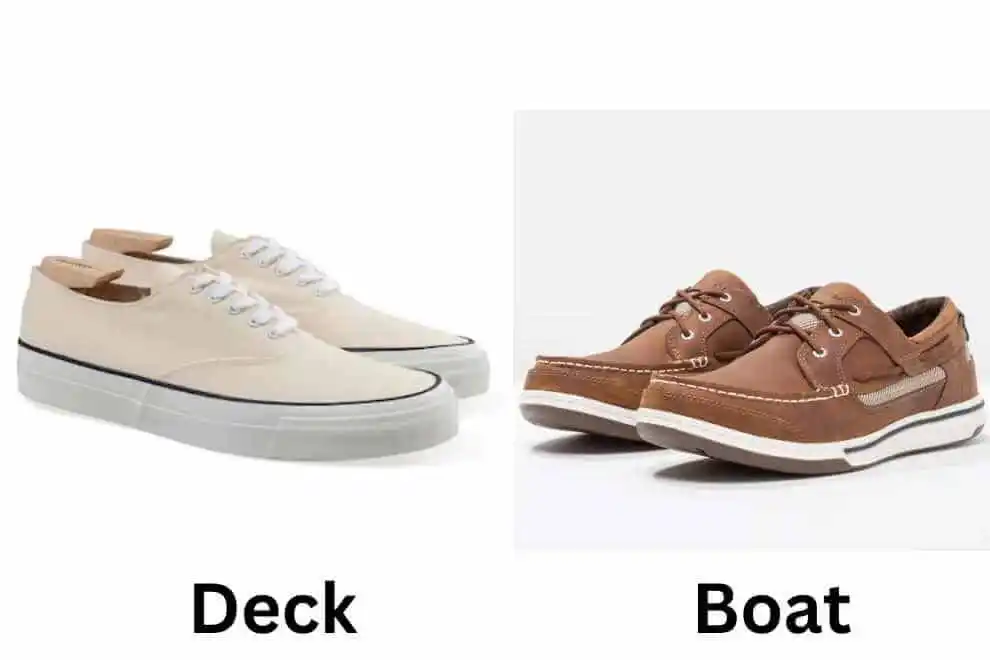
Sailing deck shoes vs boat shoes should be chosen based on the type of boat, the trip duration, and your personal preferences.
For short sailing trips or those requiring more flexibility, deck shoes are an excellent option.
They feature moccasin-style construction and a siped rubber sole for reliable traction.
However, these shoes may require extra foot support and comfort, making them less suitable for longer use.
Boat shoes are designed for long-term wear, with added cushioning and foot support.
The signature razor-cut sole pattern provides excellent grip on wet surfaces, making them equally reliable as deck shoes.
Boat shoes may be more comfortable for extended sailing trips, protecting your feet from discomfort and preventing slips and falls.
Deck Shoes vs Boat Shoes Pricing
Boat shoes vs Deck shoes can range in price depending on the quality and brand of materials used.
Generally, boat shoes are more expensive than deck shoes due to their extra features, such as arch support, cushioning, and more durable construction. I have detailed the expected price ranges for each type of shoe below.
Deck Shoes
You can generally expect to pay around $40 to $100 for a good pair of deck shoes, while designer brands can run upwards of $200.
Boat Shoes
You must pay around $80 to $200 for a good pair of boat shoes, with designer brands costing over $300.
Final Verdict
Deck vs boat shoes have unique features that suit different activities and occasions.
Deck shoes are ideal for outdoor activities like boating, while boat shoes offer versatility for casual and formal settings.
You need to understand the differences between these shoes to decide. Take my advice to consider factors such as comfort, style, intended use, and local climate should be considered when selecting footwear.
By doing so, individuals can choose the shoes that best meet their needs.
I hope this article has provided useful similarities and differences between deck and boat shoes.
Related articles:
FAQ
Q: What Is The Best Way To Clean Deck Shoes And Boat Shoes?
You can clean deck and boat shoes using a soft cloth and mild soap solution. Use gentle, non-abrasive cleaning products. It is best to let the shoes air dry completely before wearing them again.
Can Deck Shoes And Boat Shoes Be Worn In Wet Conditions?
Yes, both types of shoes are designed to provide good traction on wet surfaces and are suitable for wearing in wet conditions. Deck shoes have a rubber sole with a siping pattern specifically designed for wet surfaces, while boat shoes have a rubber sole optimized for dry surfaces.
Are Deck Shoes And Boat Shoes Durable?
Yes, both types of shoes are designed to be durable and withstand harsh weather conditions and wet environments. These shoes are typically made from durable materials such as leather and rubber.
Are Deck Shoes And Boat Shoes Suitable For Everyday Wear?
Yes, both deck shoes and boat shoes are versatile enough to be worn as part of everyday attire. They are particularly popular in the summer when people seek comfortable and stylish footwear options.
What Is The Difference Btween Deck Shoes And Boat Shoes?
While both types of shoes are low-cut, deck shoes have a wider toe, a rubber sole with a siping pattern for wet surfaces and two-eyelet lacing. Boat shoes have a raised heel, a more oval-shaped toe, a rubber sole optimized for dry surfaces, and leather laces passing through multiple eyelets.

